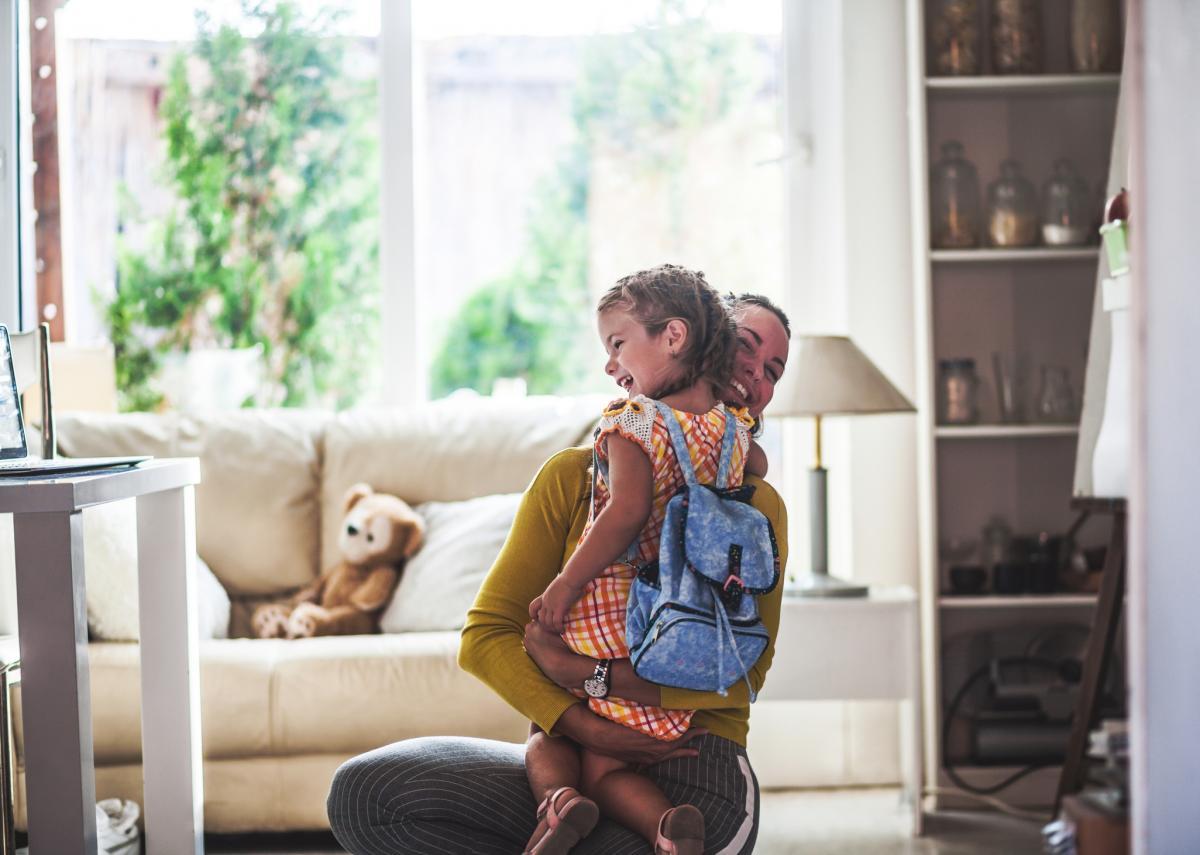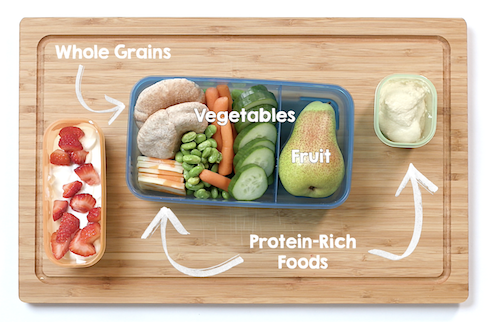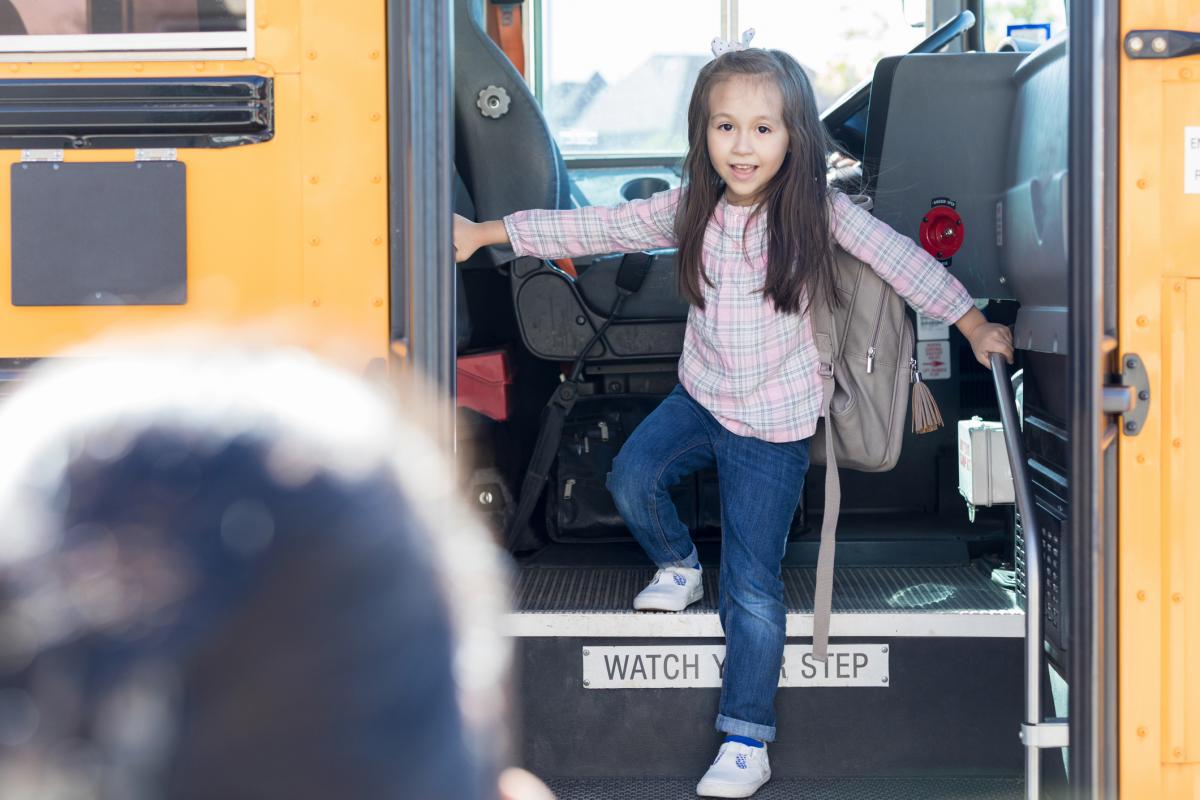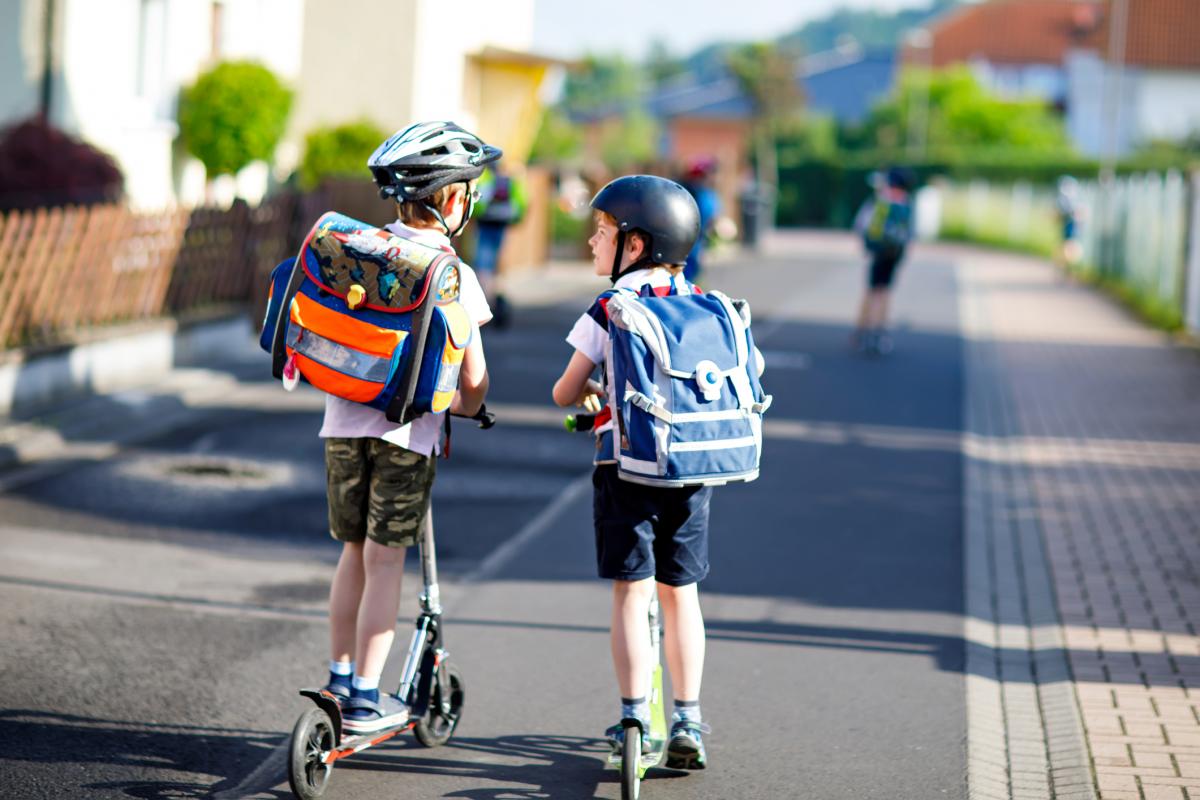The baby days are over and now your little one is headed to kindergarten! For parents and kids alike, this new chapter in life can be bring about a mixed bag of emotions including excitement and nervousness.

Making sure your child starts the year off right will set a solid foundation for their rest of the school year, helping them to put their best foot forward as they meet new friends and learn new things.
Getting prepared for their first day can be stressful, so we’ve put together tips for a healthy start to kindergarten:
Sleep
Good sleep habits are important for children as they get ready to learn. Children 3-5 years of age need 10 to 13 hours of good-quality sleep to get them through the day.
A healthy bedtime routine should include:
- A regular bedtime and wake-up time
- A quiet, relaxed period before bed like reading or listening to quiet music to unwind
- A quiet and cozy bedroom
A healthy bedtime routine does NOT include:
- Caffeine
- Stimulating activities like TV, computer/tablet use or games before bed
- TV, computer, phone, tablet or video games in the bedroom
Healthy eating

Even after a good night’s sleep, kids need fuel to get them through the day. Be sure to fuel your child’s active mind and body with tasty, nutritious meals and snacks using the new Eat Well Plate from Canada’s Food Guide. Choose whole grains, veggies, fruits and protein foods that come from plants more often. And make water the drink of choice!
Start your child’s day off right with breakfast! Kids who eat breakfast have more energy and better concentration. Try to eat together, and take advantage of simple and healthy options like cereal and fruit, or yogurt and trail mix.
What about lunch? Check out the blogs The Building Blocks of a Healthy School Lunch and Five Ideas for Healthy School Lunches for helpful lunch ideas!
Physical activity
Children 3-4 years of age should be moving at least 180 minutes throughout the day, with at least 60 minutes of energetic play as recommended in the Canadian 24-Hour Movement Guidelines. This can be easy to do if you:
- Limit screen time to under one hour per day or less
- Encourage daily outdoor playtime
- Walk to school with your child
- Encourage your child to dress in comfortable clothing and shoes that let them run, jump and play
- Go for a walk as a family after school
Sun safety
No matter the season, sun safety is important. The most harmful effects of sun exposure occur during early childhood. UV rays from the sun can reflect off snow, ice, water, sand and concrete which can cause sunburn, and skin and eye damage.
Helping your child learn to identify shaded areas like trees and buildings and to seek cover when needed is important. As is staying out of the sun when at its strongest between 11 a.m. – 4 p.m.
Handwashing
Proper handwashing is one of the best ways to prevent kids from getting sick. Encourage kids to wash their hands after going to the washroom, before eating, and whenever hands get dirty.
Proper handwashing should take about the same amount of time it takes to sing “Row, Row, Row Your Boat” or “Happy Birthday”. When handwashing, kids should follow these steps:
- Wet hands with warm water
- Lather soap on both sides of hands and in between fingers for 15 seconds
- Rinse hands
- Dry hands thoroughly
Immunization
Immunization protects children from diseases. In many cases, immunizations are actually required for children to attend school in Ontario. Be sure to keep your child’s immunizations up-to-date and remember to report them to Public Health. You can use the Immunization Connect Ontario (ICON) tool to report or view your child’s electronic records of vaccines. When your child is fully protected, if an outbreak occurs, they will be able to stay in school.
Taking the bus?

If travelling to school on a school bus, annual “first rider” programs are available to teach bus safety tips to your child, as well as how to get on and off the school bus safely.
Encourage your kids to walk to the bus stop. Just because you live too far to walk all the way, doesn’t mean they can’t walk part of the way!
Walking to school?
Walking to school benefits you and your child. Fresh air and exercise stimulate the body and mind and can even help improve your child’s grades!
Before school starts it’s important to:
- Plan a safe walking route and practice walking the route with your child
- Adopt a buddy system. Is there a “walking buddy” like a sibling or a friend who could walk with your child?
- Talk about the rules of the road and teach them the basics of pedestrian safety
Backpack safety

It’s important that young children avoid carrying heavy backpacks. Carrying a pack that is too heavy can cause complications in spine and back muscle development.
Backpacks should:
- Weigh less than 10% of your child’s body weight
- Have the heaviest items packed at the bottom of the bag
- Carry only what is needed for the day
- Have two shoulder straps and a waist strap to help distribute the weight more evenly
For even more backpack safety tips, check out this infographic.
Now that you know all of these tips, we encourage you and your child to get prepped, be safe and have fun on the first day of school!
